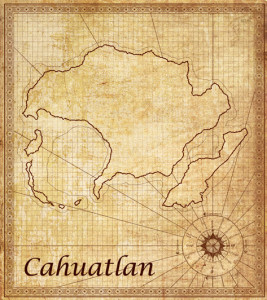As authors, piracy is a constant threat to our income and property. Some don’t mind having their works available for download, while others are adamant that their work should be purchased. Should you find your works posted on a pirate website — or worse, plagiarized with someone else’s name as the author — you can take action to remove the infringing material using the legal tools provided by the Digital Millennium Copyright Act, or DMCA. Please note that sending false claims can get you into legal trouble, so don’t use the DMCA tools to play a practical joke. These tools can be used by non-US authors. The good news is it’s easy to do the steps required; the bad news is it may take some time for the works to be removed.
To be proactive, you should request your fans to alert you when they find pirated works on the Internet. Another proactive approach is to set up a Google Alert using a unique sentence or two from your story. It’s best to catch the pirates as soon as possible to get the link removed before too many people find it.
Our first stop is Google, currently the world’s most popular search engine. Using their copyright infringement tool to delete links to your stolen material is simple. For example, to delete a link from Google’s web search results:
- Log into Google. Note you must be logged in to Google to fill out the form. You can create an account if you don’t have one. If you have a GMail account, log in using that.
- Surf to https://www.google.com/webmasters/tools/dmca-notice?pli=1&
- Fill in the complete form. If any field is not completely filled in, no action will be taken.
You may, of course, send a notice via fax or post. Most sites require your first notice of infringement to be sent via fax or post so they will have your signature on file, but Google does not. Google will post your DMCA notice (without your name and signature) to chillingeffects.org.
For Yahoo and Bing, you will need to send your first request via fax or post. Subsequent requests can be emailed. I have included a generic sample DMCA request at the end of this article, plus links to targeted DMCA sample requests, including Yahoo and Bing.
Mail or fax your Yahoo request to:
Copyright Agent
c/o Yahoo! Inc.
701 First Avenue
Sunnyvale, CA 94089
Fax: (408) 349-7821
Email: copyright@yahoo-inc.com
Mail or fax your Bing request to:
DMCA Request
Attn: K. Carlson
Microsoft Corporation – The Microsoft Network
One Microsoft Way, Redmond, WA 98052
Fax: (425) 936-7329
Email: dmcaagnt@microsoft.com
Now that we’ve taken care of the links, we can focus on getting rid of the actual infringing content. There are two avenues we can take. The first is to request the infringing website to remove the content. Places like Scribd.com and Pastebin.com will typically act on a DMCA notice quickly because they are concerned the US Government will seize their domains. The other path is to send the request to the hosting company of the infringing website. If your content is posted on a random person’s site, this is a better method to get the content removed. Some overseas sites and host providers, especially in China, will not care about copyrighted material, and they’ll ignore your request.
To start, we must first find out who owns the domain and where they are hosted. The research tool to find the owner and host is called a WhoIs Lookup. There are several versions available. I will typically use either MXToolbox or Network Solutions. For MXToolbox, surf to their site and click on the down arrow at the end of their menu. Select WhoIs Lookup from the menu and enter in the pirate domain name. For Network Solutions, at the bottom of their page you will find a WhoIs link. Click on that, then enter in the domain name. You should get something similar to this, using FICTORIANS.COM as our example:
Domain Name: FICTORIANS.COM
Registry Domain ID: 1647105966_DOMAIN_COM-VRSN
Registrar WHOIS Server: whois.godaddy.com
Registrar URL: http://www.godaddy.com
Update Date: 2014-03-24T12:24:08Z
Creation Date: 2011-03-24T04:32:50Z
Registrar Registration Expiration Date: 2016-03-24T04:32:50Z
Registrar: GoDaddy.com, LLC
Registrar IANA ID: 146
Registrar Abuse Contact Email: abuse@godaddy.com
Registrar Abuse Contact Phone: +1.480-624-2505
Domain Status: clientTransferProhibited http://www.icann.org/epp#clientTransferProhibited
Domain Status: clientUpdateProhibited http://www.icann.org/epp#clientUpdateProhibited
Domain Status: clientRenewProhibited http://www.icann.org/epp#clientRenewProhibited
Domain Status: clientDeleteProhibited http://www.icann.org/epp#clientDeleteProhibited
Registry Registrant ID:
Registrant Name: Registration Private
Registrant Organization: Domains By Proxy, LLC
Registrant Street: DomainsByProxy.com
Registrant Street: 14747 N Northsight Blvd Suite 111, PMB 309
Registrant City: Scottsdale
Registrant State/Province: Arizona
Registrant Postal Code: 85260
Registrant Country: United States
Registrant Phone: +1.4806242599
Registrant Phone Ext:
Registrant Fax: +1.4806242598
Registrant Fax Ext:
Registrant Email: FICTORIANS.COM@domainsbyproxy.com
(truncated a long repetitive list)
Name Server: NS2339.HOSTGATOR.COM
Name Server: NS2340.HOSTGATOR.COM
DNSSEC: unsigned
Lucky for us, this domain seems legit and has plenty of contact information. You can send a DMCA request to the Owner, Administrator or the Technical Contact. If someone’s site was hacked and is being used to host pirated material, this method would get a fast response. The site owner may thank you for alerting them to the hack.
Let’s say that the site had false or outdated information. We can send our DMCA notice to the company that owns the actual servers that contain the pirate website, known as the host. At the bottom of the list are listings for the Name Server, which is how computers translate website names into numeric addresses that they can understand. Copy the site name and extension, in this case HOSTGATOR.COM from the above FICTORIANS.COM example, and run it through the WhoIs Lookup tool. The tool will show you who is hosting the infringing website.
Domain Name: HOSTGATOR.COM
Registry Domain ID: 91478876_DOMAIN_COM-VRSN
Registrar WHOIS Server: WHOIS.ENOM.COM
Registrar URL: WWW.ENOM.COM
Update Date: 2015-04-13T21:33:43.00Z
Creation Date: 2002-10-22T22:07:55.00Z
Registrar Registration Expiration Date: 2015-10-22T22:07:55.00Z
Registrar: ENOM, INC.
Registrar IANA ID: 48
Registrar Abuse Contact Email: ABUSE@ENOM.COM
Registrar Abuse Contact Phone: +1.4252982646
Domain Status: REGISTRAR-LOCK
Registry Registrant ID:
Registrant Name: ADAM FARRAR
Registrant Organization: HOSTGATOR
Registrant Street: 5005 MITCHELLDALE
Registrant Street: SUITE #100
Registrant City: HOUSTON
Registrant State/Province: TX
Registrant Postal Code: 77092
Registrant Country: US
Registrant Phone: +1.7135745287
Registrant Phone Ext:
Registrant Fax: +1.2814767800
Registrant Fax Ext:
Registrant Email:
Registrant:
(truncated additional information)
It turns out the (probably undead) pirate site FICTORIANS.COM is hosted by HOSTGATOR.COM. Send your DMCA notice to the host. They will either help to get the copyrighted material removed or kill the entire pirate site.
You can, if you feel it is warranted, send a DMCA notice to the website and the host. Remember to always be professional — finding your work pirated or plagiarized is not a fun thing, but getting it removed will give you at least a modicum of satisfaction.
Generic DMCA Request follows. Notes are in [square brackets].
Attn: Legal Department, [Web Site Legal Name: ARRGH-A-PIRATE.COM]
Pursuant to the Digital Millennium Copyright Act, 17 USC 512(c)(3)(A),
this communication serves as a statement that:
1. I am the exclusive rights holder for the title(s), listed below,
of copyrighted material being infringed upon:
Title, Publisher, Date of Release, ISBN
My Cool Book, Tor, 4/1/2001, 9781234567890
My Warm Book, Tor, 4/1/2002, 9780123456789
[TITLE (you can do more than one on a single take-down and save time),
PUBLISHER (list the full publishing history of a book), DATES OF RELEASE,
and the ISBNS the title has had. If the book has had several ISBNs,
list them all. If there were multiple publishers, list them all.]
2. These exclusive rights are being violated by material available on your
site at the following URL(s):
a) http://www.arrgh-a-pirate.com/stolenbooks/My-Cool-Book.html
b) http://www.arrgh-a-pirate.com/stolenbooks/My-Warm-Book.html
[Use the full URL address to the infringing material]
3. I have a good faith belief that the use of this material in such a fashion
is not authorized by the copyright holder, the copyright holder's agent, or the law.
4. Under penalty of perjury in a United States court of law, I state that the
information contained in this notification is accurate, and that I am the exclusive
rights holder for the material in question.
5. I may be contacted by the following methods:
EMAIL: me@myemail.com
URL: http://www.myauthorwebsite.com/contact.htm
POST: Ima Author, POBox 123, Town, NY, 12345-0123
[Your email address may be placed on a spam list. Use GMail or an email with a good
spam filter if you can.]
6. I hereby request that you remove or disable access to this material as it appears
on your service in as expedient a fashion as possible. Thank you.
Regards,
[If you write under a pen name, you can use it here. Otherwise, use your real name.]
I would like to thank and acknowledge both Cari Silverwood and Sam Stone for a copy of the DMCA notice they’ve used to successfully remove infringing material.
An example Yahoo DMCA notice, in Word format, can be found at http://www.seologic.com/worddoc/dmca-yahoo.doc
An example Bing DMCA notice, in Word format, can be found at http://www.seologic.com/worddoc/dmca-bing.doc
About the Author:
Guy Anthony De Marco is a speculative fiction author; a Graphic Novel Bram Stoker Award®; winner of the HWA Silver Hammer Award; a prolific short story and flash fiction crafter; a novelist; an invisible man with superhero powers; a game writer (Sojourner Tales modules, Interface Zero 2.0 core team, D&D modules); and a coffee addict. One of these is false.
A writer since 1977, Guy is a member of the following organizations: SFWA, WWA, SFPA, IAMTW, ASCAP, RMFW, NCW, HWA. He hopes to collect the rest of the letters of the alphabet one day. Additional information can be found at
Wikipedia,
GuyAndTonya.com, and
GuyAnthonyDeMarco.com.


 Katie Cross used to be fond of gummy bears, but lately her tendencies lean more toward cuddling with puppies.When she’s not writing YA fantasy novels with kick @$%#*(@ females that don’t need a man to save them, you can find her at Starbucks.
Katie Cross used to be fond of gummy bears, but lately her tendencies lean more toward cuddling with puppies.When she’s not writing YA fantasy novels with kick @$%#*(@ females that don’t need a man to save them, you can find her at Starbucks.







